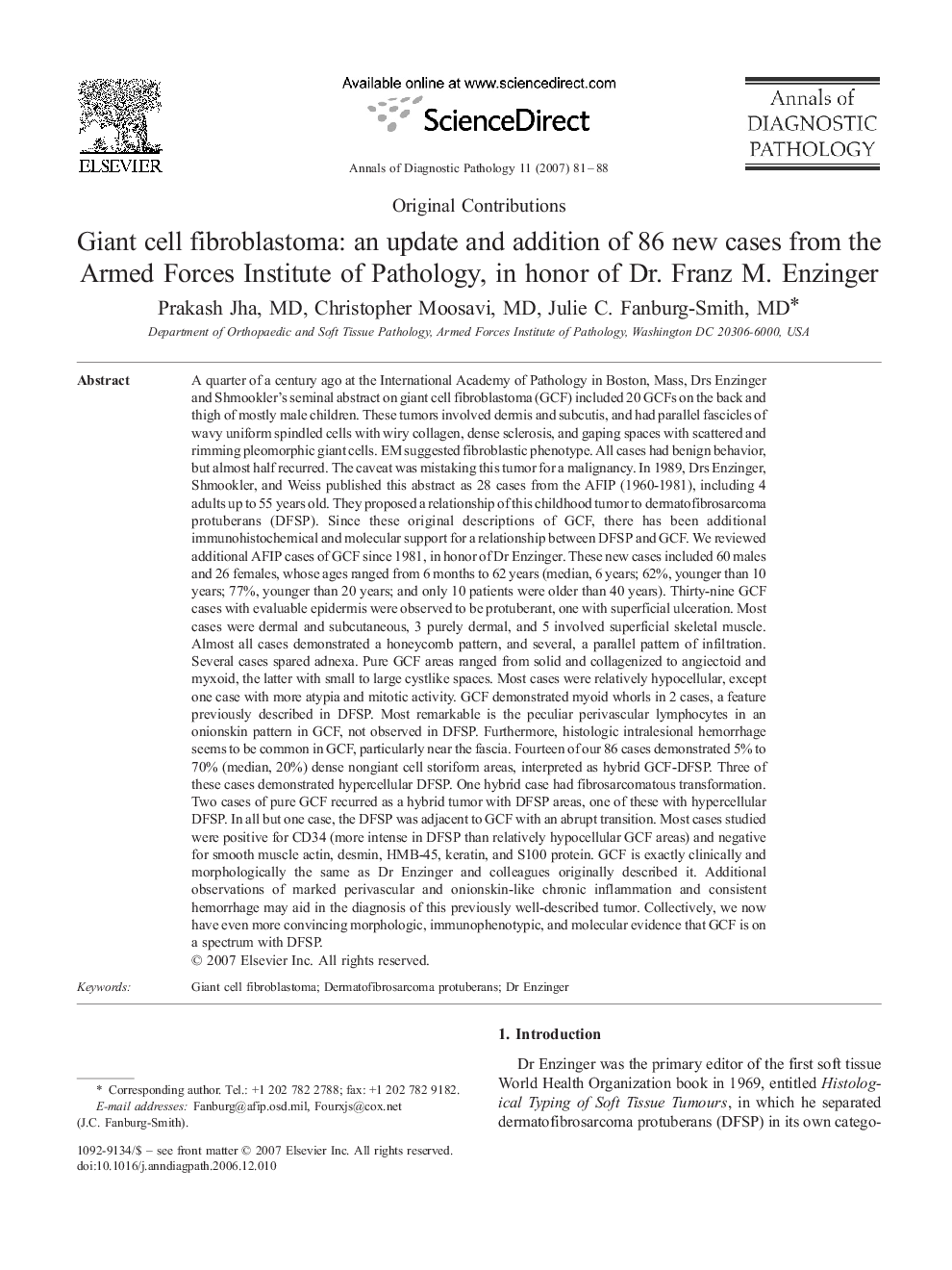| Article ID | Journal | Published Year | Pages | File Type |
|---|---|---|---|---|
| 4130326 | Annals of Diagnostic Pathology | 2007 | 8 Pages |
A quarter of a century ago at the International Academy of Pathology in Boston, Mass, Drs Enzinger and Shmookler's seminal abstract on giant cell fibroblastoma (GCF) included 20 GCFs on the back and thigh of mostly male children. These tumors involved dermis and subcutis, and had parallel fascicles of wavy uniform spindled cells with wiry collagen, dense sclerosis, and gaping spaces with scattered and rimming pleomorphic giant cells. EM suggested fibroblastic phenotype. All cases had benign behavior, but almost half recurred. The caveat was mistaking this tumor for a malignancy. In 1989, Drs Enzinger, Shmookler, and Weiss published this abstract as 28 cases from the AFIP (1960-1981), including 4 adults up to 55 years old. They proposed a relationship of this childhood tumor to dermatofibrosarcoma protuberans (DFSP). Since these original descriptions of GCF, there has been additional immunohistochemical and molecular support for a relationship between DFSP and GCF. We reviewed additional AFIP cases of GCF since 1981, in honor of Dr Enzinger. These new cases included 60 males and 26 females, whose ages ranged from 6 months to 62 years (median, 6 years; 62%, younger than 10 years; 77%, younger than 20 years; and only 10 patients were older than 40 years). Thirty-nine GCF cases with evaluable epidermis were observed to be protuberant, one with superficial ulceration. Most cases were dermal and subcutaneous, 3 purely dermal, and 5 involved superficial skeletal muscle. Almost all cases demonstrated a honeycomb pattern, and several, a parallel pattern of infiltration. Several cases spared adnexa. Pure GCF areas ranged from solid and collagenized to angiectoid and myxoid, the latter with small to large cystlike spaces. Most cases were relatively hypocellular, except one case with more atypia and mitotic activity. GCF demonstrated myoid whorls in 2 cases, a feature previously described in DFSP. Most remarkable is the peculiar perivascular lymphocytes in an onionskin pattern in GCF, not observed in DFSP. Furthermore, histologic intralesional hemorrhage seems to be common in GCF, particularly near the fascia. Fourteen of our 86 cases demonstrated 5% to 70% (median, 20%) dense nongiant cell storiform areas, interpreted as hybrid GCF-DFSP. Three of these cases demonstrated hypercellular DFSP. One hybrid case had fibrosarcomatous transformation. Two cases of pure GCF recurred as a hybrid tumor with DFSP areas, one of these with hypercellular DFSP. In all but one case, the DFSP was adjacent to GCF with an abrupt transition. Most cases studied were positive for CD34 (more intense in DFSP than relatively hypocellular GCF areas) and negative for smooth muscle actin, desmin, HMB-45, keratin, and S100 protein. GCF is exactly clinically and morphologically the same as Dr Enzinger and colleagues originally described it. Additional observations of marked perivascular and onionskin-like chronic inflammation and consistent hemorrhage may aid in the diagnosis of this previously well-described tumor. Collectively, we now have even more convincing morphologic, immunophenotypic, and molecular evidence that GCF is on a spectrum with DFSP.
